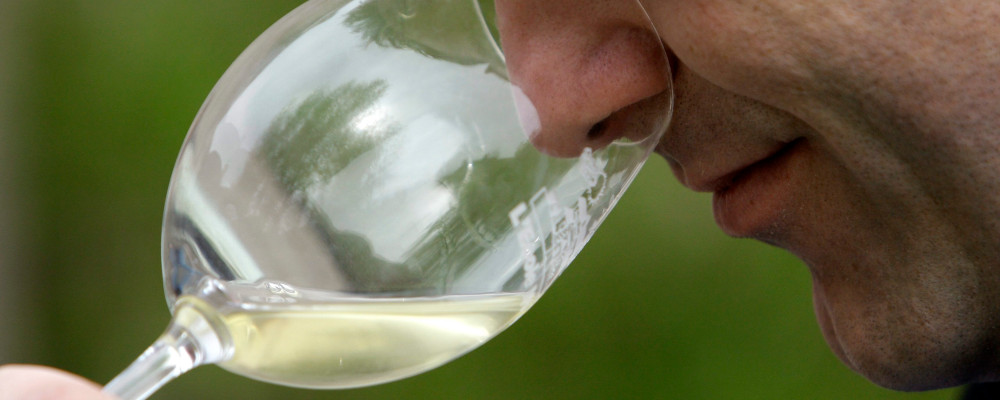I induced a look of bemused pity from a colleague of mine once when in the course of a friendly conversation I gave what was clearly the wrong answer to his question. At a walk-around tasting, as we swirled around glasses of $100 a bottle Pinot Noir, he asked me what my favourite grape was. Judging by his reaction, the answer was clearly not supposed to be “Chardonnay”.
To be fair, to all involved, Chardonnay was not my favourite grape then, nor is it particularly now. To paraphrase Tim Atkin MW, my favourite grape variety is the one (or ones) that got crushed to make whatever wine that I am enjoying at the moment. Wine is contextual, and the perfect depends on earthly and temporal conditions as much as any Platonic ideal.
Still, Chardonnay was my answer, because I find it one of the more interesting grapes. It has been simultaneously at the height and bottom of fashion for a quarter of a century. On the one hand, most of the most expensive white wines in the world are Chardonnay made from Burgundy or Champagne. On the other hand, some of the most boring, plonky wines from anywhere can very well be Chardonnay. Even if the ABC (anything but Chardonnay) movement moved on, Chardonnay is not cool no matter how much a bottle of Bâtard-Montrachet might cost.
Chardonnay is also interesting because it’s found just about everywhere wine grapes are grown. Part of this is for the very good reason that it can be grown just about anywhere between the 30th and 50th latitudes, more or less the climatic range of Vitis vinifera. It’s hardy, versatile and adaptable to all kinds of soil types and climates.
Chardonnay was also once the height of wine fashion. Not the ones from Burgundy, but the ones from the New World that sought to take their place. The top white wine from the famous Judgement of Paris blind tasting, organized by the late Steven Spurrier in May of 1976, was the 1973 Chateau Montelena Chardonnay, made from grapes grown from the Napa and Alexander Valleys of Northern California.
For the next 25 years, Californian and then Australian Chardonnay were the queens of white wines. They were popular at high and low price points, and the success of the New World Chardonnays inspired winegrowers in all corners of the wine world to plant Chardonnay in the last two decades of the 20th century.
One of my favourite Chardonnays is the one made from vines planted by the late Diego Planeta in Western Sicily in the mid-1980s. Planeta’s Chardonnay would get his eponymous winery noticed, as critics were curious as to what a Scilian Chardonnay might taste like. This translated into trade and consumer interest as buyers were more open to taking a chance on a wine made from a grape they knew than an indigenous one they hadn’t heard of, like Catarrato or Inzolia.
As it happened, Signor Planeta was a champion of the native grapes of Sicily, and the Planeta wineries that are run by his descendants are renowned for making wines all over the island with the grapes that were traditionally grown on each of their six sites. But in the 1980s and ’90s, so-called “international” grapes like Chardonnay (and Cabernet Sauvignon and Merlot) were the way to success.
The ’80s and ’90s boom in Chardonnay planting, and the subsequent pivot to indigenous grapes, means that in Europe the odds that a non-Burgundy Chardonnay has been made from vines that are 30 or 40 years old are high. These older vines are coming into their peak maturity, producing less yield, but with fruit of higher intensity and concentration.
On trips abroad, I have seen colleagues dismiss the lone bottle of Chardonnay on the tasting table in favour of the Riesling, Chenin Blanc, Pecorino or whatever was considered authentically local. They would wonder why I honed in on it, but those brave enough to take my suggestion that it might be worth trying were more often than not pleasantly surprised.

In Wine Grapes (2012) Harding, Robinson, and Vouillamoz write: “Chardonnay, loved or reviled, is arguably the most versatile white wine grape. Without a dominant flavour of its own, it can take on a wide array of aromas depending on where it is grown and, particularly, how it is made.”
Earlier this year I wrote about Thomas Bachelder’s Toussaint project and the 11 Chardonnays he made from the 2020 vintage, each from a particular site (lieu-dit) in Ontario’s Niagara Peninsula. Bachelder did his best to treat each wine the same, so that the different sites, and different parts of the region, from Lake Ontario to higher lands on the Escarpment, showed, much like the famous vineyards of Burgundy.
In this way, I think Chardonnay makes an interesting blank canvas for a study of how one geographical area might taste different from another. As I write, in my fridge sit four bottles of Chardonnay, ranging in price from $30 to $17 a bottle. They are from Burgundy (André Goichot Mâcon Villages 2019), Niagara’s Beamsville Bench (Malivoire Small Lot Chardonnay 2021), Piedmont in Northwestern Italy (Fontanafredda Langhe Chardonnay 2021) and South Australia (Wakefield Estate Label Chardonnay 2021). It will be fun to see how they resemble or differ from each other.
Of course, terroir doesn’t actually make wine, people do. Chardonnay offers its winemakers the full complement of choices on how to shape the ultimate flavour of a wine. This includes what the wine is made in: is it new or old (neutral) oak barrels, stainless steel, or concrete? Or whether to allow a secondary malolactic fermentation that converts sharper, green apple-like acids into milky or buttery ones. There are more factors to be controlled, like using wild or cultured yeast, exposure to oxygen, or leaving the wine to rest on its lees.
I’ll never commit to a favourite grape, or a favourite wine. If you visited my small cellar, there’s no particular theme to what I have collected other than what’s in it looked interesting at the time. But, if I was presented with one of those campfire challenges, the kind that asked, if I had to choose one wine grape, and that wine grape was the only wine grape I could drink for the rest of my life, what would it be? Chardonnay, for the reasons above, would be an excellent cheat (and I didn’t even mention Champagne).
Recommended for You

Malcolm Jolley: Cool Chardonnays for warm days

Malcolm Jolley: The LCBO strike was a spectacular misstep

Malcolm Jolley: Doug Ford is right. The LCBO has long outlived its purpose

Malcolm Jolley: What is rosé anyway?










